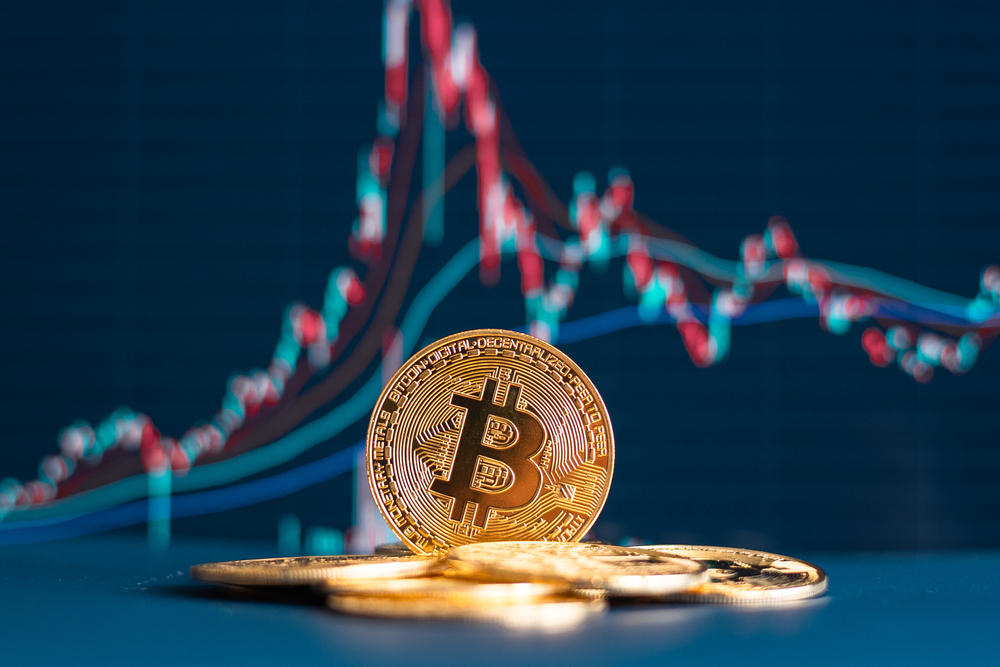What is the fair value of Bitcoin? Pegging the price of an asset is based on supply and demand. In the world of equities, fundamental analysts use price-to-earnings ratios and price-to-sales ratios to provide investors with a “fair value.” Bitcoin is a digital coin. Additionally, Bitcoin has an interest rate. Some trading platforms allow you to lend your Bitcoin and receive interest payments. This scenario provides investors with an interest rate differential which they can use to determine the future direction of Bitcoin but might help with a fair value calculation. You can also look at Bitcoin relative to other ways investors store value. You can compare Bitcoin to gold, silver, or other liquid cryptocurrencies like Ethereum. A wide range of investment professionals has provided a public target for Bitcoin, making for even more volatility when engaging in crypto trading.
JP Morgan Targets 35K
In November, JP Morgan bucked the trend and announced that they believe the target price of Bitcoin is closer to 35,000 than the then-current levels around 50,000. This assertion from the global investment bank is based on their “fair value” model. JP Morgan’s strategies believe that high levels of volatility and the Fed reducing its bond purchase program will lead to a drop in the price of Bitcoin to their fair value level. The November report flies in the face of a comment from JP Morgan CEO Jamie Dimon, who said that Bitcoin prices could increase by 10 times and be worthless.
What is Fair Value?
The term “Fair value” has several meanings. When it comes to investing, it refers to the equilibrium price of an asset that will attract liquid transactions. The term might be slightly different when evaluating an investment for accounting purposes. In accounting, the fair value of an asset is when the liabilities listed on the company’s book provide a value compared to the assets the company holds.
Can Price Reflect the Fair Value?
Fair value can also be reflected in the historical price of an asset. For example, the 50 week moving average, which estimates the value of an asset over the past 12 months, can be a gauge of fair value. In the chart of Bitcoin versus the U.S. dollar, you can see that the 50 week moving average has become a target for price. Each time the price tries to escape from the 50 week moving average, it reverts to the norm. You can argue that the 50 week moving average is the fair value of Bitcoin.

Comparing Bitcoin to Other Ways to Store Value
Another technique to determine the fair value of Bitcoin is to evaluate the asset relative to other stores of value. Gold historically has been a popular way to purchase a hard asset in times of volatility and price inflation. Gold prices have declined versus Bitcoin over the past few years, which is reflected in the increase in the ratio of BTC/XAU. You can also see that this ratio continues to rise and fall toward the 1 year moving average. In this fair value case, with BTC/XAU at 7.3, Bitcoin would need to fall another 10% (with gold remaining unchanged) to reach the mark of the 50 week moving average.

Another way to measure the fair value of Bitcoin is to measure it against another popular cryptocurrency. When evaluating the ratio of Bitcoin to Ethereum, you can see that Ethereum has outperformed Bitcoin and that the balance is well below the 50-week moving average. For Bitcoin to rise to the 50 week moving average of the ratio of BTC/USD versus ETH/USD, it would need to rally 70% (if Ethereum remained unchanged).
Why are Bitcoin Interest Rates So High?
Bitcoin interest rates range from .5% to 17%. Interest rates are elevated because it is hard to find Bitcoin, and certain platforms need to attract investors to lend Bitcoin. As the number of Bitcoins decrease, interest rates will need to climb to attract investors who want to lend Bitcoin. The interest rate differential favors holding bitcoin over the U.S. dollar. If you hold bitcoin and borrow U.S. dollars, you can receive an interest rate differential from zero to 16.5% (based on a borrowing rate of 0.5% for U.S. dollars). This situation could make Bitcoin seem more attractive and could increase its fair value.
The Bottom Line
The upshot is that determining fair value is not easy for a cryptocurrency. You can look at the evaluations of large investment banks and determine your value using historical price information. For example, the 50 week moving average might gauge fair value. You might also consider comparing the price of Bitcoin to other ways to store value, such as gold prices or another cryptocurrency like Ethereum. Before you become attached to a fair value level, look at the different ways you can determine the fair value of Bitcoin.







